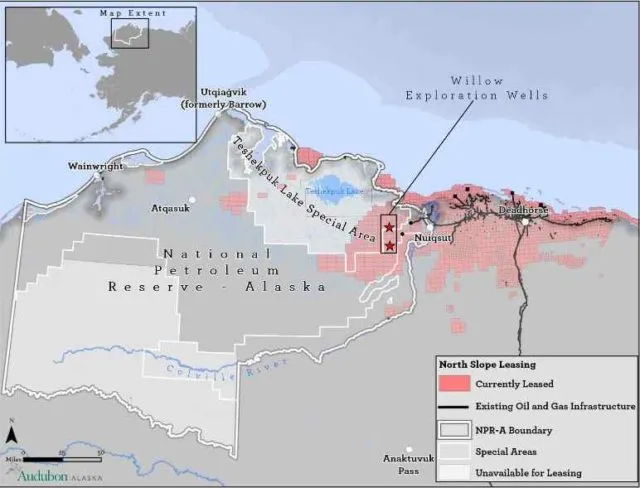by Kristen Miller / Alaska Native News

Washington, D.C. – Friday, the Bureau of Land Management (BLM) released a Supplemental Environmental Impact Statement (SEIS) to analyze the impacts of ConocoPhillips’ Willow Project in the National Petroleum Reserve-Alaska (Reserve). Alaska Wilderness League expressed strong concerns about the climate and environmental impacts of the massive project during BLM’s public process earlier this year and in a letter sent by the leaders of 18 organizations to Secretary Haaland last week. More than 140 organizations and 200,000 individuals from throughout Alaska and across America submitted comments last winter opposing the Willow project, calling on President Biden to protect America’s Western Arctic.
“If approved the Willow project would be bigger than any other proposed oil and gas project on our nation’s public lands, and it poses an unparalleled climate and biodiversity threat that puts President Biden’s climate legacy at risk,” said Kristen Miller, conservation director of the Alaska Wilderness League. “This project is proposed in America’s Western Arctic, an area that is already being ravaged by climate change, this project would put critical wildlife and subsistence resources in the crosshairs, and it would lock us into decades of carbon-intensive oil and gas extraction.
“Willow is a legacy setting project that will test whether the Biden administration is righting America’s course from a dangerous climate path,” Miller said. “We look forward to working with the agency on a plan that prioritizes this sensitive habitat for its immense ecological resources and as a one-of-a-kind climate opportunity to reverse course regarding fossil development on our nation’s public lands.”
The National Petroleum Reserve-Alaska in Alaska’s Western Arctic is the largest single-unit of public land in the nation, spanning approximately 23 million acres across Alaska’s western North Slope. The Western Arctic is home to some of our nation’s most vital natural resources — millions of acres of wilderness-quality lands with critical habitat for migratory birds, brown bears, caribou, threatened polar bears, walrus and more. The Alaska Native communities that live in and around the Reserve have maintained a subsistence lifestyle for thousands of years based on its living resources.
